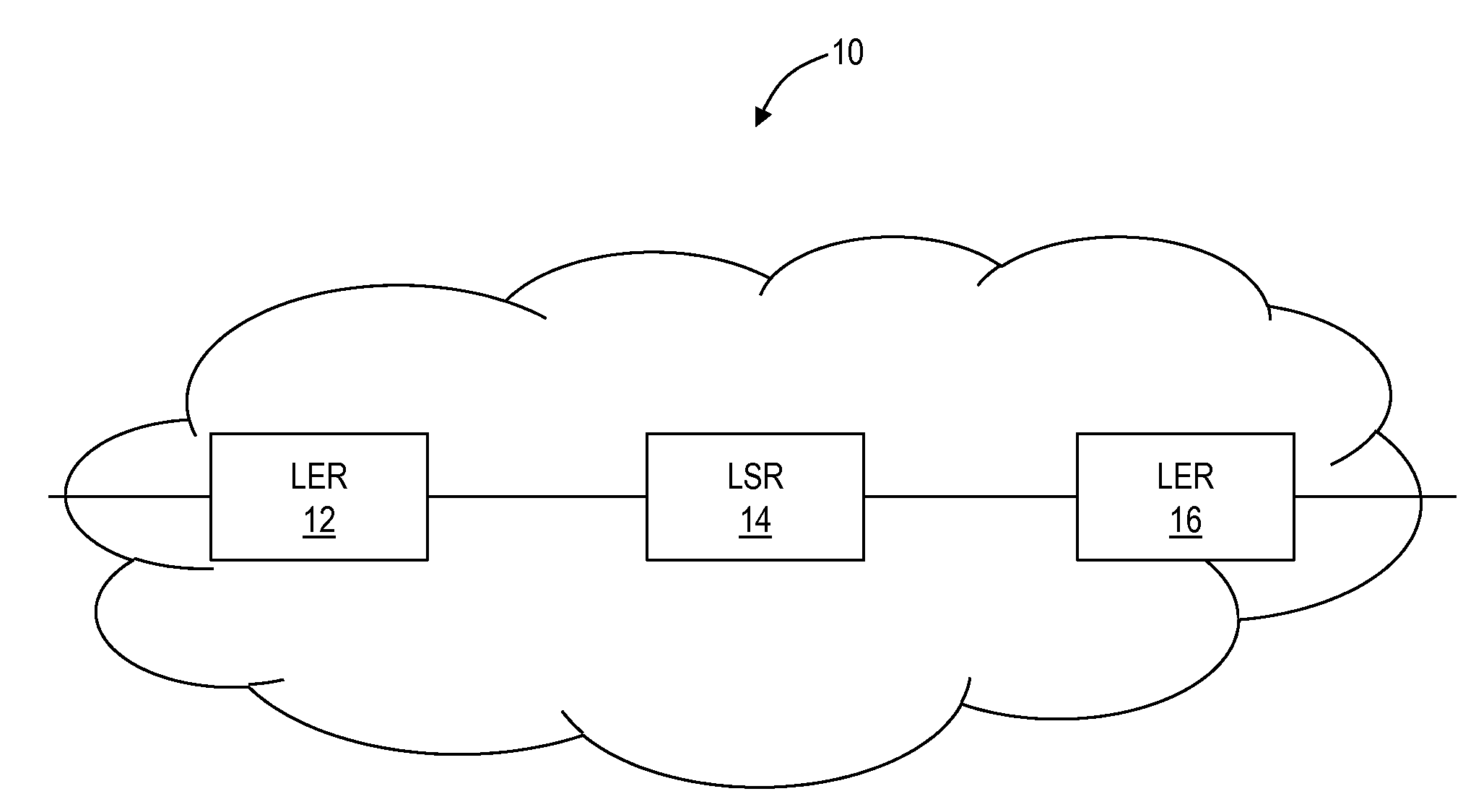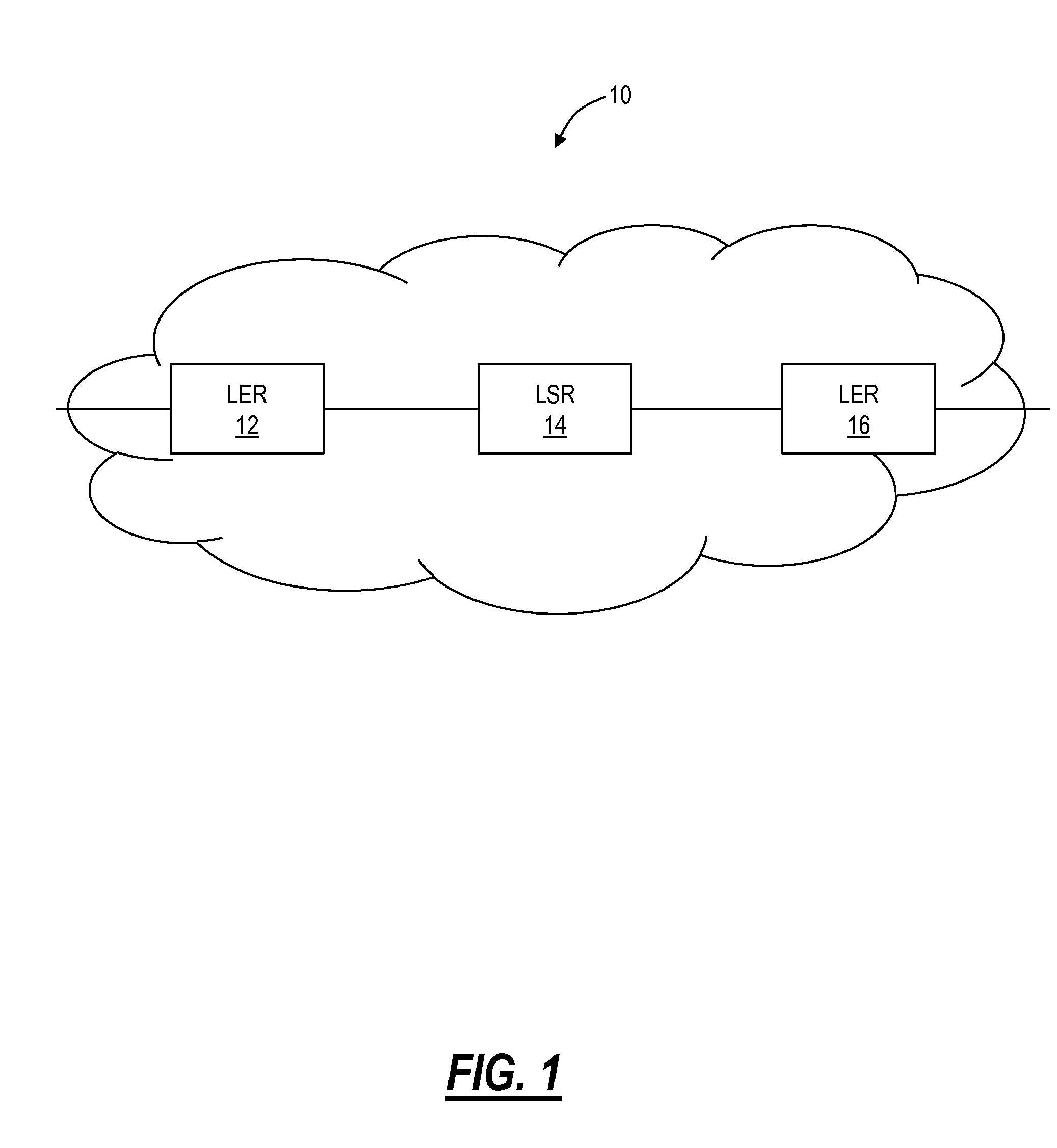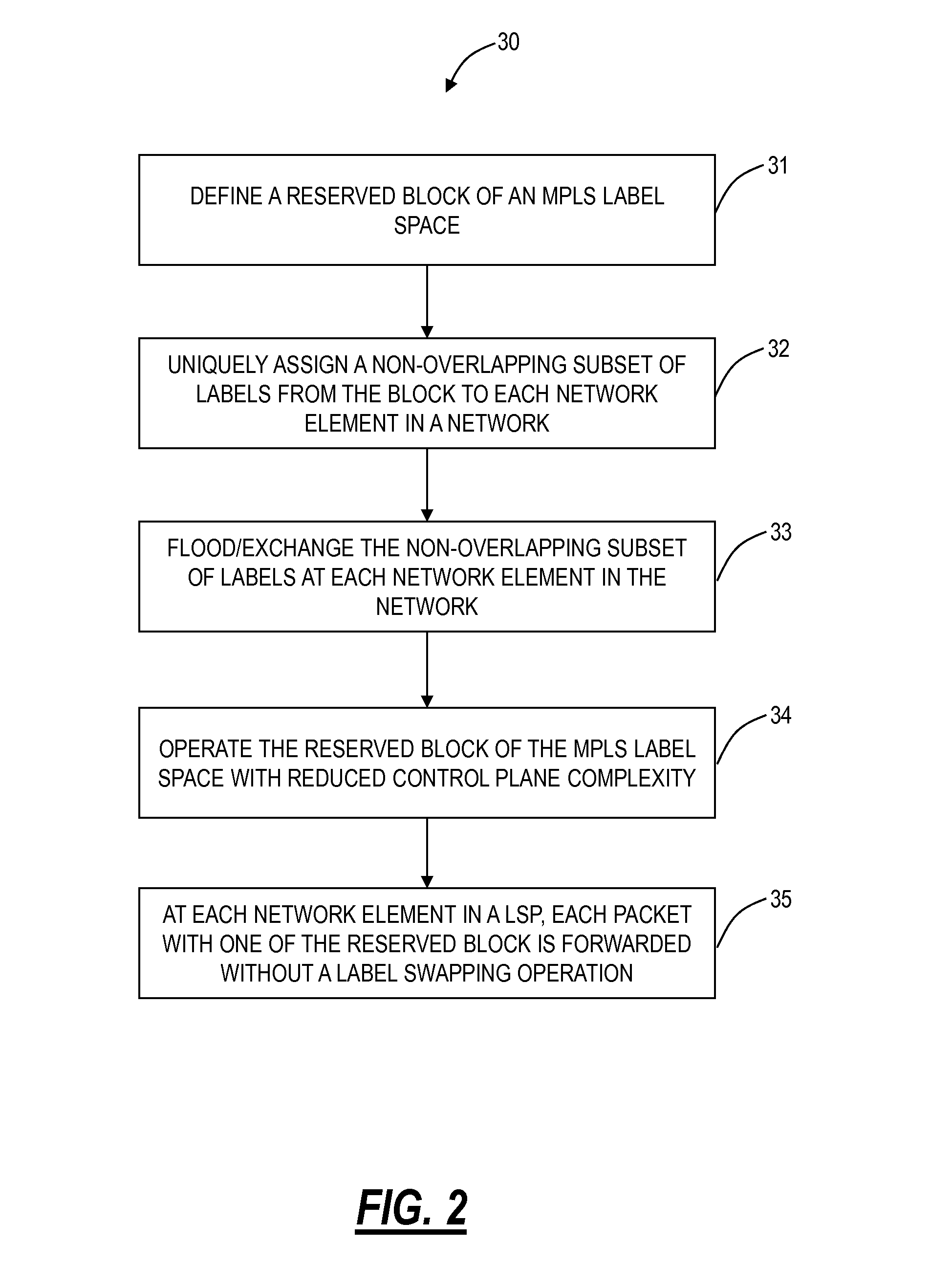Source identification preservation in multiprotocol label switching networks
a multi-protocol label switching and source identification technology, applied in data switching networks, digital transmission, electrical equipment, etc., can solve problems such as delaying the recovery from faults, requiring very significant control protocol complexity, and creating complexity, so as to reduce complexity mpls, simplify the operation procedures of the mpls network domain, and reduce complexity
- Summary
- Abstract
- Description
- Claims
- Application Information
AI Technical Summary
Benefits of technology
Problems solved by technology
Method used
Image
Examples
Embodiment Construction
[0023]In various exemplary embodiments, source identification preservation systems and methods for MPLS are described such as in Segment Routed and Reduced Complexity MPLS systems and methods. Source identification preservation systems and methods can be achieved in either a Reduced complexity MPLS network or a Segment Routed MPLS network by an operation whereby the ingress node to the Reduced complexity or MPLSDN domain pushes a label which uniquely represents itself in such a network onto the bottom-of-stack, prior to pushing the label (stack) which defines the route to the destination. That way, when the packet arrives at the destination, the last label remaining on the stack defines the packet's source, which is exactly the information required to count and otherwise characterize packet flows on a point-to-point basis. In another implementation of the technique, the “last label” above is defined not by its position in the label stack, but by the presence of an explicit reserved ...
PUM
 Login to View More
Login to View More Abstract
Description
Claims
Application Information
 Login to View More
Login to View More - R&D
- Intellectual Property
- Life Sciences
- Materials
- Tech Scout
- Unparalleled Data Quality
- Higher Quality Content
- 60% Fewer Hallucinations
Browse by: Latest US Patents, China's latest patents, Technical Efficacy Thesaurus, Application Domain, Technology Topic, Popular Technical Reports.
© 2025 PatSnap. All rights reserved.Legal|Privacy policy|Modern Slavery Act Transparency Statement|Sitemap|About US| Contact US: help@patsnap.com



